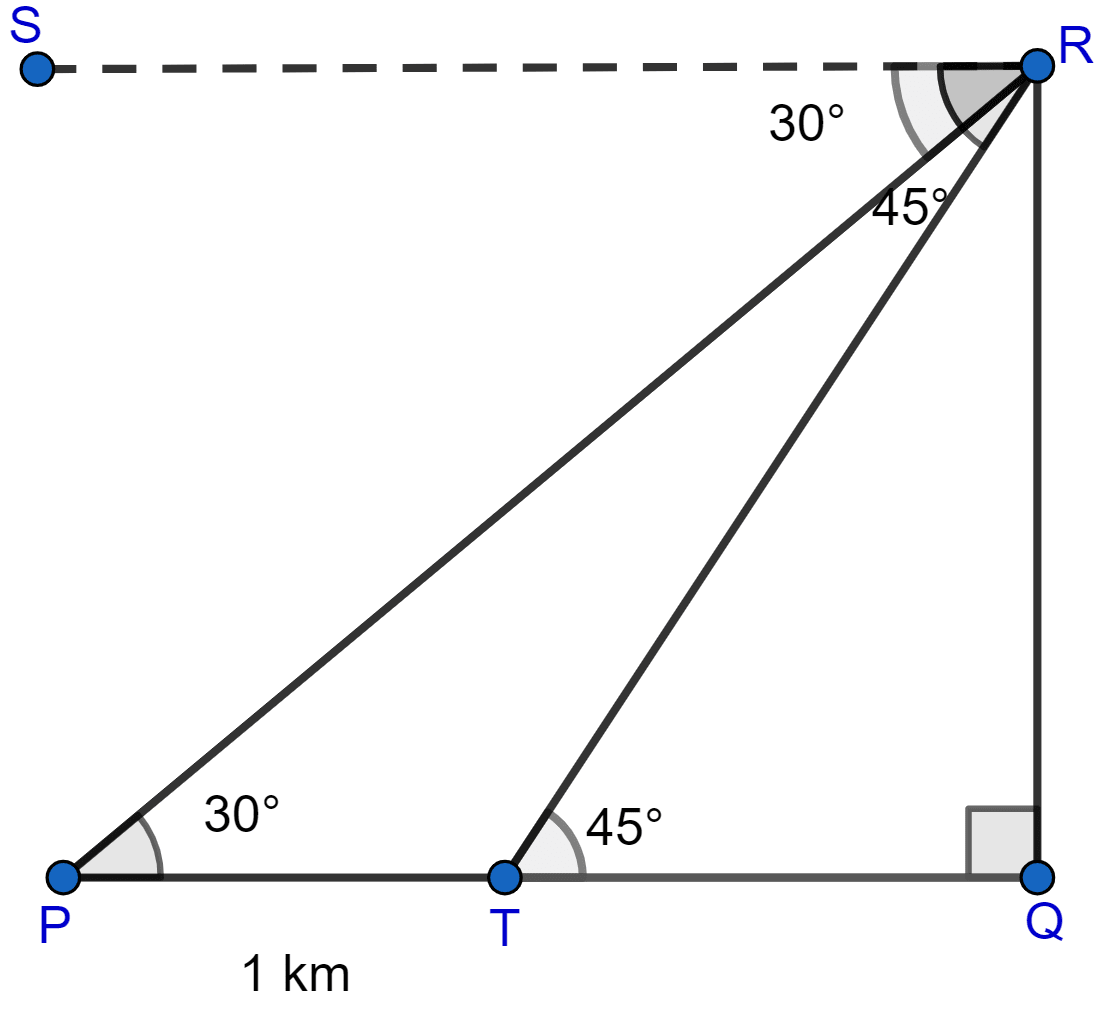Mathematics
From the top of a hill, the angles of depression of two consecutive kilometer stones, due east are found to be 30° and 45° respectively. Find the distance of two stones from the foot of the hill.
Heights & Distances
61 Likes
Answer
Let R be the top of the tower and Q the foot. P and T be two consecutive kilometer stones with depression angles 30° and 45° respectively.

Since stones are consecutive kilometer stones hence distance between them = 1 km.
From figure,
∠RPQ = ∠SRP = 30° (Alternate angles are equal)
∠RTQ = ∠SRT = 45° (Alternate angles are equal)
PT = 1 km
TQ = PQ - PT = PQ - 1 (Eq 1)
From right angled △PQR, we get
From right angled △TQR, we get
Using Eq 1,
TQ = PQ - 1 = 2.366 - 1 = 1.366.
Hence, the distance of two stones from hill are 1.366 km and 2.366 km.
Answered By
17 Likes
Related Questions
A man observes the angle of elevation of the top of a tower to be 45°. He walks towards it in a horizontal line through its base. On covering 20 m, the angle of elevation changes to be 60°. Find the height of the tower correct to 2 significant figures.
The shadow of a vertical tower on a level ground increases by 10 m when the altitude of the sun changes from 45° to 30°. Find the height of the tower, correct to two decimal places.
A man observes the angle of elevation of the top of a building to be 30°. He walks towards it in a horizontal line through its base. On covering 60 m, the angle of elevation changes to 60°. Find the height of the building correct to the nearest metre.
At a point on level ground, the angle of elevation of a vertical tower is found to be such that its tangent is . On walking 192 m towards the tower, the tangent of the angle is found to be . Find the height of the tower.